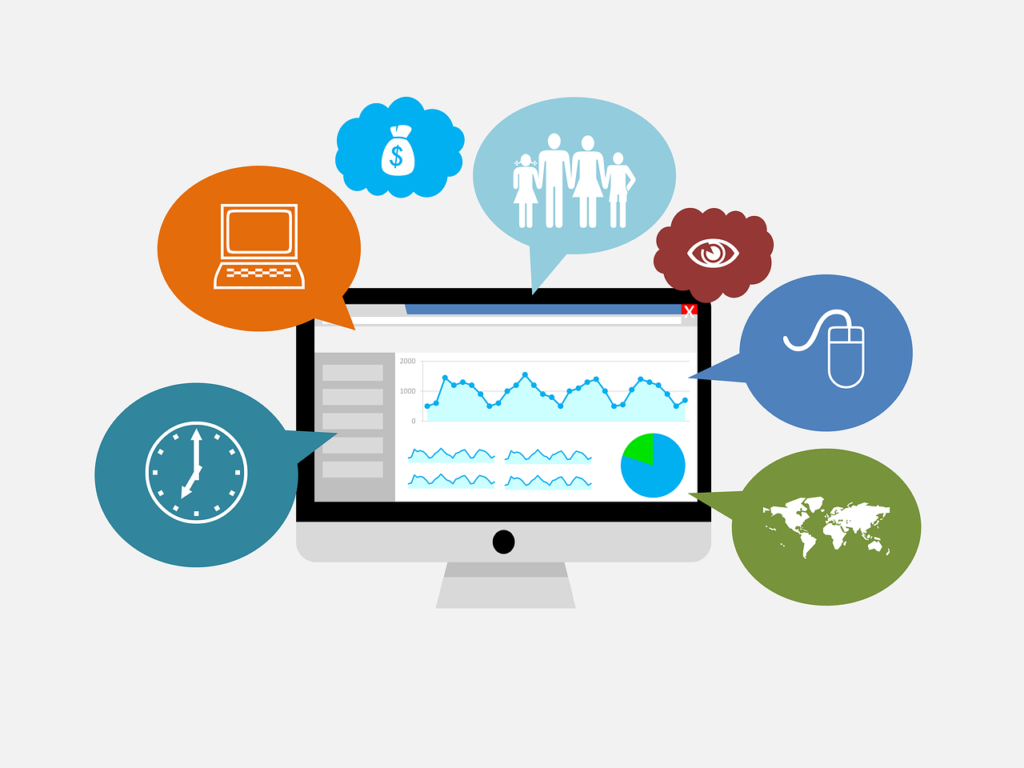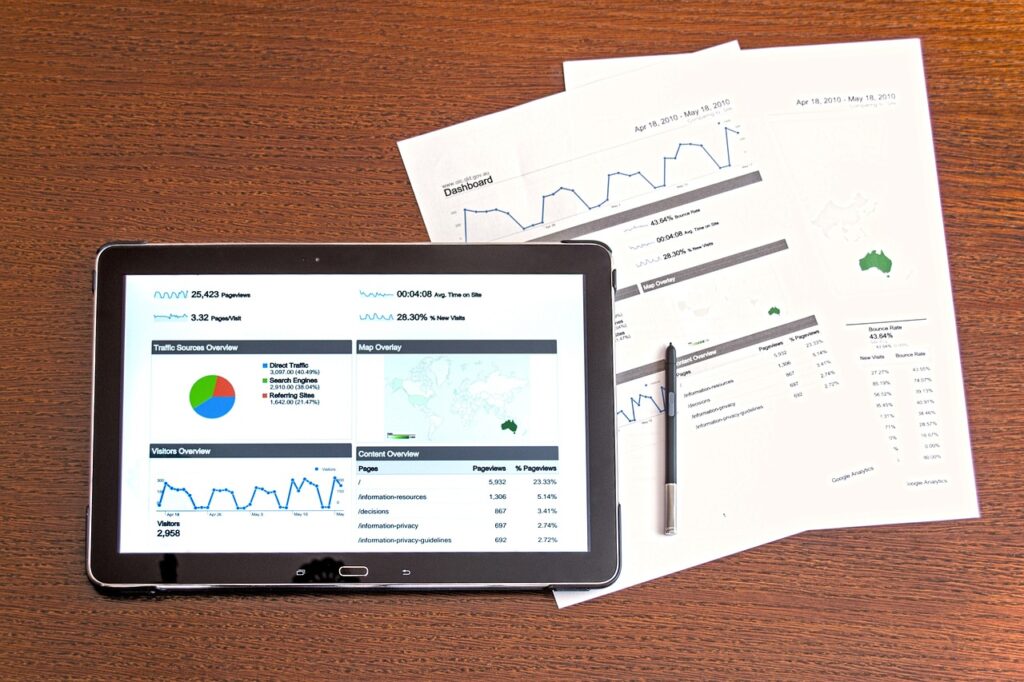Introduction To SEO
Search Engine Optimization (SEO) is the practice of enhancing the quality and quantity of website traffic by increasing the visibility of a website or a web page to users of a web search engine. On the other hand, Social Media Marketing involves using social media platforms to connect with your audience to build your brand, increase sales, and drive website traffic. Combining SEO and social media marketing can be a powerful strategy for businesses looking to maximize their online presence and reach their target audience effectively.
Read Also: How To Humanize AI Generated Content: Breathe Life Into It (1)
- Synergy of SEO and Social Media: When SEO and social media strategies work hand in hand, they can amplify each other’s effects. SEO helps in improving the search engine ranking of your website, making it more discoverable to potential customers. Meanwhile, social media platforms provide an additional avenue to engage with your audience, share valuable content, and drive traffic back to your site.
- Content Distribution: Sharing your content on social media not only helps in increasing visibility but also boosts the chances of your content getting shared, linked to, and referenced – all crucial factors for SEO success. Additionally, an active social media presence can enhance brand awareness and credibility, indirectly benefiting your SEO efforts.
- Increased Reach and Engagement: Social media platforms allow businesses to reach a broader audience beyond traditional search results. By creating engaging and shareable content, you can attract more users to your website. This increased engagement can lead to improved search engine rankings with time.
Combining SEO and social media marketing creates a holistic approach towards enhancing your online presence and boosting brand visibility. This article will go deeper into the benefits of this winning combination and provide insights into how businesses can leverage both strategies simultaneously for optimal results.
Read Also: How To Humanize AI Generated Content: Breathe Life Into It (1)

Understanding SEO and Social Media Marketing
- SEO (Search Engine Optimization):
- SEO is the practice of optimizing your website to rank higher in search engine results pages.
- Effective SEO strategies involve keyword research, on-page optimization, backlink building, and creating high-quality content.
- By focusing on SEO, businesses can increase organic traffic to their websites and improve their online visibility.
- Social Media Marketing:
- Social media marketing involves using social media platforms to promote your products or services.
- It includes creating and sharing content, engaging with followers, and running targeted ads to reach a specific audience.
- Social media marketing helps businesses build brand awareness, drive website traffic, and generate leads.
- The Relationship Between SEO and Social Media Marketing:
- SEO and social media marketing are interconnected and can complement each other.
- Social media signals (likes, shares, comments) can contribute to a website’s SEO rankings.
- Sharing content on social media can increase visibility and drive traffic to a website, which can positively impact SEO.
- Engaging with followers on social media can also improve brand reputation and customer trust, which indirectly benefits SEO efforts.
- Benefits of Integrating SEO and Social Media Marketing:
- By integrating SEO and social media marketing, businesses can create a holistic digital marketing strategy.
- This approach enhances online visibility, attracts more organic traffic, and improves brand recognition.
- Coordinating SEO keywords with social media content can increase the reach and engagement of posts.
- Tracking and Analyzing Performance:
- It is essential to track and analyze the performance of both SEO and social media marketing efforts.
- Utilize tools like Google Analytics and social media insights to monitor website traffic, engagement metrics, and conversion rates.
- Regular performance analysis helps in identifying areas for improvement and optimizing strategies for better results.
Read Also: How to Integrate SEO and Social Media Marketing Efforts The Best Aproach in 2024.
Benefits of Integrating SEO and Social Media Marketing

- Expanded Reach: Integrating SEO and social media allows businesses to reach a broader audience. Social media platforms provide an avenue for sharing content, increasing visibility, while SEO ensures that the content ranks well in search engine results.
- Enhanced Brand Awareness: By combining SEO strategies that focus on keywords and social media platforms that facilitate engagement, businesses can boost brand visibility and recognition. This leads to increased brand awareness among target audiences.
- Improved Website Traffic: The synergy between SEO and social media can drive more traffic to a company’s website. Optimized content attracts organic search traffic, while social media posts direct followers to the website, resulting in a higher volume of website visitors.
- Better Search Engine Rankings: When used together, SEO and social media help improve a website’s search engine rankings. Social signals, such as likes, shares, and comments, influence search engine algorithms, and high-quality content optimized for SEO ranks higher in search results.
- Higher Customer Engagement: Integrating SEO and social media enables businesses to engage with customers on multiple platforms. This interaction builds relationships, fosters trust, and encourages customer loyalty, leading to increased conversions and repeat business.
- Cost-Effective Marketing: Leveraging both SEO and social media is a cost-effective marketing strategy. Organic search traffic generated through SEO and social media engagement with followers require minimal financial investment compared to traditional advertising methods.
- Measurable Results: Businesses can track the impact of integrating SEO and social media through various analytical tools. Metrics such as website traffic, social media engagement, keyword rankings, and conversion rates provide insights into the effectiveness of the combined strategies and help in making data-driven decisions.
Read Also: Exploring the Power of AI-Generated Text in Content Creation.
How to Create an Integrated SEO and Social Media Marketing Strategy
- Understand Your Audience: Conduct thorough research to identify your target audience, their preferences, behaviors, and interests across various social media platforms.
- Keyword Research: Utilize keyword research tools to identify relevant keywords that align with your social media content and SEO strategy.
- Optimize Social Profiles: Ensure your social media profiles are complete and optimized with relevant keywords, compelling descriptions, and consistent branding.
- Content Integration: Create content that is tailored for both SEO and social media. Implement keywords naturally within your social media posts, captions, and profiles.
- Engagement Strategies: Foster engagement on social media by responding to comments, messages, and interactions. Encourage social sharing to boost visibility and reach.
- Link Building: Incorporate social media in your link building strategy by sharing relevant content from your website on different platforms to increase backlinks.
- Track and Analyze Data: Use analytics tools to monitor the performance of your integrated strategy. Track metrics such as website traffic, social media engagement, keyword rankings, and conversions.
- A/B Testing: Experiment with different approaches to understand what resonates best with your audience. Test different types of content, posting times, and messaging to refine your strategy.
- Collaborate with Influencers: Partner with influencers who can amplify your content and reach a wider audience. Influencers can help boost your social media presence and improve your SEO rankings.
By following these steps and continuously optimizing your integrated SEO and social media marketing strategy, you can effectively leverage both channels to enhance your online presence and drive business growth.

Choosing the Right Keywords for SEO and Social Media
- Conduct thorough keyword research to identify relevant and high-performing keywords for your business.
- Utilize keyword research tools such as Google Keyword Planner, SEMrush, or Ahrefs to find keyword suggestions and search volume data.
- Focus on long-tail keywords that are more specific to your products or services to target a more qualified audience.
- Consider the search intent behind keywords – whether it is informational, navigational, or transactional – to tailor your content accordingly.
- Incorporate keywords naturally into your website content, social media posts, and ads to improve visibility and engagement.
- Monitor keyword performance regularly and adjust your strategy based on changes in search trends or audience behavior.
- Use a mix of broad keywords to increase visibility and specific keywords to drive targeted traffic to your website or social media profiles.
- Regularly update your list of keywords to stay relevant and competitive in the ever-evolving digital landscape.
By prioritizing the right keywords for your SEO and social media efforts, you can enhance your online presence, attract a larger audience, and ultimately drive more traffic and conversions for your business.
Use AI tool like blogseo Its an AI writer designed specifically for content generation.
Creating Engaging Social Media Content for SEO
- Understand Your Audience: Conduct research to determine what kind of content resonates with your target audience. Create content that will capture their attention and drive engagement.
- Utilize Visual Content: Use eye-catching images, videos, and graphics to make your posts more appealing and shareable. Visual content tends to perform better on social media platforms.
- Optimize Your Posts: Incorporate relevant keywords in your social media posts to improve their visibility in search results. Use hashtags strategically to increase discoverability.
- Encourage Interaction: Prompt your followers to like, comment, and share your posts. Engaging with your audience leads to higher levels of participation and can positively impact your SEO efforts.
- Share High-Quality Content: Be consistent in sharing valuable and informative content. High-quality posts are likely to be shared more frequently, increasing your brand’s visibility online.
- Monitor Performance: Track the performance of your social media content to see what is resonating with your audience. Use analytics tools to gain insights and make data-driven decisions for future content creation.
- Collaborate with Influencers: Partnering with influencers in your industry can help expand your reach and increase engagement. Influencers can help amplify your message and drive more traffic to your website.
By following these strategies and creating engaging social media content, you can boost your SEO efforts and strengthen your online presence.
Measuring the Success of Your SEO and Social Media Marketing Efforts
- Utilize tools like Google Analytics to track website traffic, source of traffic, and user behavior.
- Monitor key performance indicators (KPIs) such as organic search traffic, keyword rankings, social media engagement, and conversion rates.
- Track the number of followers, likes, shares, comments, and other social media metrics to gauge the effectiveness of your social media strategy.
- Analyze the impact of SEO and social media marketing efforts on brand awareness, lead generation, and revenue growth.
- Compare your performance metrics to industry benchmarks to assess how well your campaigns are performing relative to your competitors.
- Regularly review and adjust your strategies based on the data and insights gathered to optimize the results of your SEO and social media marketing efforts.
By consistently monitoring and analyzing the metrics related to SEO and social media marketing, businesses can gain valuable insights into the performance of their digital marketing strategies. This data-driven approach enables companies to make informed decisions, identify areas for improvement, and ultimately maximize the impact of their online presence.
Case Studies: Successful Integration of SEO and Social Media Marketing
- Company A: Company A effectively integrated SEO and social media marketing by creating high-quality content optimized for search engines and promoted through social media channels. By utilizing relevant keywords and engaging with their audience on platforms like Facebook and Instagram, Company A saw a significant increase in website traffic and overall brand visibility.
- Company B: Company B implemented a cohesive SEO and social media strategy by regularly posting keyword-rich content on their blog and sharing it across their social media profiles. This approach resulted in improved search engine rankings, increased social media engagement, and ultimately, higher conversion rates for Company B.
- Company C: Company C focused on building a strong social media presence by sharing valuable content that resonated with their target audience. By incorporating SEO strategies such as optimizing their social media profiles and using trending keywords in their posts, Company C was able to drive more traffic to their website and boost their online visibility.
These case studies illustrate the successful integration of SEO and social media marketing to enhance brand awareness, drive website traffic, and improve overall digital marketing performance. By combining these two powerful strategies, businesses can effectively reach their target audience, increase online engagement, and ultimately grow their bottom line.
Read Also: Exploring the Power of AI-Generated Text in Content Creation. 2

Future Trends in SEO and Social Media Marketing
- Voice Search Optimization: With the growing popularity of virtual assistants like Siri and Alexa, optimizing content for voice search will become increasingly important. Businesses will need to focus on long-tail keywords and natural language to cater to voice search queries effectively.
- Video Content Dominance: Video content is already on the rise, and this trend is predicted to continue. Businesses that incorporate video into their SEO and social media strategies are likely to see higher engagement rates and better visibility on search engines.
- Artificial Intelligence Integration: AI-powered tools can help businesses analyze data, personalize content, and automate tasks, leading to more efficient SEO and social media marketing campaigns. Integrating AI technologies into marketing strategies will be crucial for staying competitive.
- Interactive Content: Interactive content, such as polls, quizzes, and surveys, is proven to drive higher levels of engagement. Incorporating interactive elements into SEO and social media efforts can enhance user experience and encourage sharing, thereby boosting brand visibility.
- Ephemeral Content: Platforms like Instagram and Snapchat have popularized ephemeral content that disappears after a set period. Utilizing ephemeral content in marketing strategies can create a sense of urgency among audiences, driving immediate action and increasing brand awareness.
- Influencer Collaboration: Partnering with influencers who align with a brand’s values and target audience can significantly amplify reach and engagement. Future trends suggest that influencer collaborations will continue to play a vital role in both SEO and social media marketing strategies.
Incorporating these future trends into SEO and social media marketing efforts can help businesses stay ahead of the curve and maximize their online presence and audience engagement.
Conclusion
Note: A Take home clue to Achieving that breakthrough…
- Integration is Key: Intertwining SEO and social media marketing strategies is essential for maximizing online visibility and engagement.
- Synergy of Efforts: By combining the power of SEO and social media, businesses can amplify their reach and ensure a consistent brand message across platforms.
- Analytical Insight: Utilizing analytics to track the impact of SEO and social media campaigns provides valuable data for refining strategies and improving ROI.
- Adaptability is Vital: The digital landscape is constantly evolving, requiring businesses to stay flexible and adapt their SEO and social media tactics accordingly.
- Continuous Optimization: Regularly optimizing content and campaigns based on performance metrics is crucial for staying ahead in the competitive online market.
- Harnessing User Interaction: Encouraging user engagement through social media and leveraging SEO to drive traffic fosters a loyal customer base and boosts conversions.

To crown it up, the symbiotic relationship between SEO and social media marketing offers a potent formula for businesses to enhance their online presence, connect with their target audience, and achieve sustainable growth. By leveraging the strengths of both strategies and staying attuned to the latest trends, businesses can create a robust digital marketing framework that propels them towards success in the dynamic digital landscape.
Read Also: Exploring the Power of AI-Generated Text in Content Creation. 2
How To Humanize AI Generated Content: Breathe Life Into It (1)


